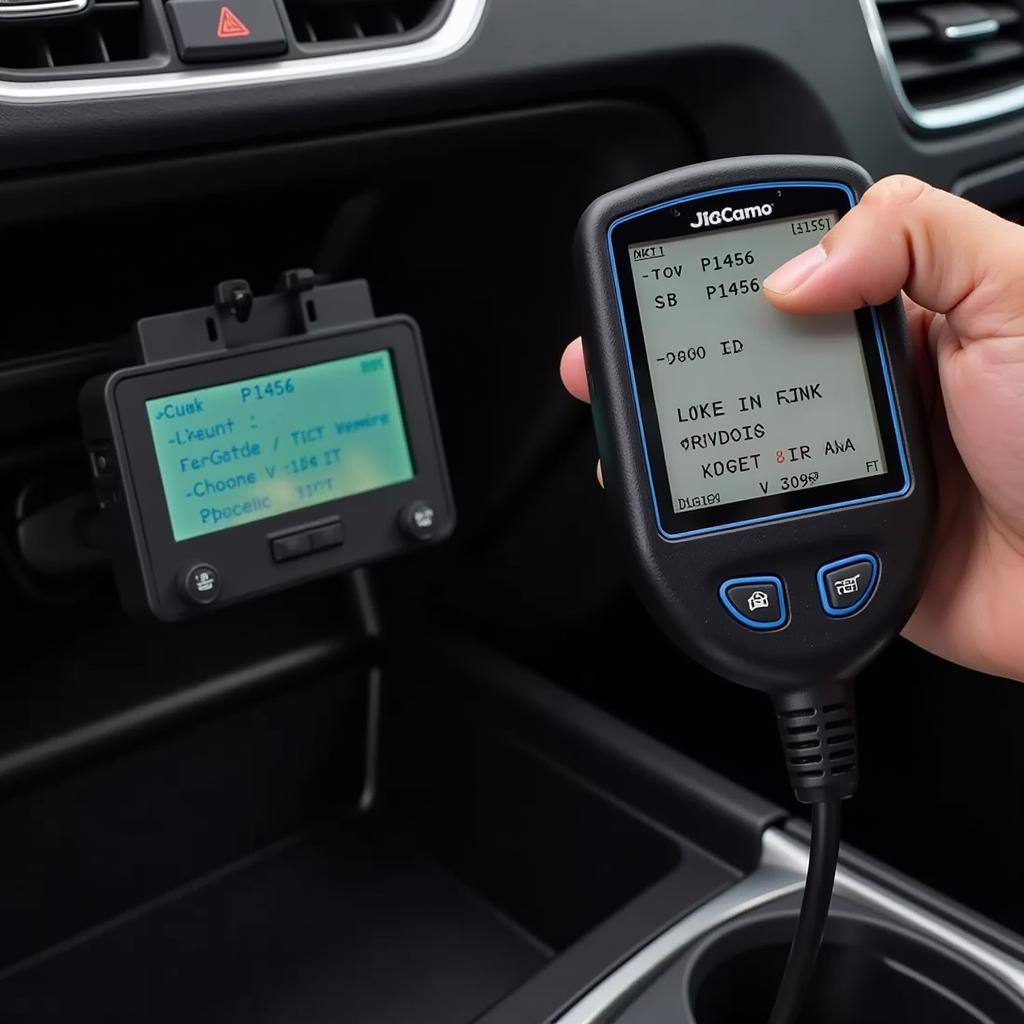Dealing with a mysterious car code can be frustrating. If you’re seeing the code P1456 (and not PI456, which isn’t a standard OBD-II code), you’re likely facing an issue related to your Evaporative Emission Control (EVAP) system. Understanding how to fix car code P1456 can save you a trip to the mechanic and keep your car running smoothly.
Understanding the EVAP System and Code P1456
The EVAP system is a crucial part of your vehicle’s emission control system. Its primary function is to prevent fuel vapors from escaping into the atmosphere. These vapors are captured in a sealed system and eventually purged into the engine for combustion. Code P1456 typically indicates a small leak detected somewhere in this closed system. Diagnosing and fixing this leak is key to resolving the issue.
Common Causes of Car Code P1456
Several components within the EVAP system can contribute to a P1456 code. The most common culprits include:
- Loose or Damaged Gas Cap: This is often the easiest fix. A loose or damaged gas cap can break the seal of the EVAP system, allowing vapors to escape.
- Faulty Purge Valve or Solenoid: The purge valve regulates the flow of fuel vapors into the engine. A malfunctioning valve can disrupt the system’s pressure and trigger the P1456 code.
- Cracked or Damaged EVAP Lines or Hoses: Over time, the EVAP lines and hoses can become brittle and crack, leading to leaks.
- Leaking Fuel Tank or Filler Neck: While less common, a leak in the fuel tank or filler neck can also cause the P1456 code.
- Faulty Vent Control Valve: This valve regulates the pressure within the EVAP system. A faulty valve can cause pressure fluctuations and trigger the code.
 Evaporative Emission Control System Components Diagram
Evaporative Emission Control System Components Diagram
How to Diagnose and Fix Car Code P1456
Addressing a P1456 code requires a systematic approach. Here’s a step-by-step guide:
- Check the Gas Cap: Start with the simplest solution. Ensure the gas cap is tightly secured. If the cap is damaged, replace it with a new one.
- Inspect EVAP Lines and Hoses: Carefully examine all EVAP lines and hoses for cracks, damage, or loose connections. Replace any damaged components.
- Test the Purge Valve and Solenoid: Use a multimeter to test the purge valve and solenoid for proper operation. Replace any faulty parts.
- Check the Vent Control Valve: Inspect the vent control valve for damage or blockage. Replace if necessary.
- Inspect the Fuel Tank and Filler Neck: Check for any signs of leaks or damage. This may require a professional inspection.
“A simple visual inspection can often reveal obvious issues like cracked hoses or a loose gas cap,” says automotive expert John Smith, ASE Master Certified Technician. “Don’t underestimate the importance of a thorough check before moving on to more complex diagnostic procedures.”
Using a Smoke Machine for EVAP Leak Detection
A smoke machine can be invaluable in pinpointing EVAP leaks. This tool introduces smoke into the EVAP system, making it easier to visually identify the source of the leak.
Preventing Future P1456 Codes
Regular maintenance can help prevent future P1456 codes. This includes:
- Regularly checking and tightening the gas cap.
- Inspecting EVAP lines and hoses for wear and tear.
- Addressing any EVAP system issues promptly.
“Preventive maintenance is always the best approach,” advises Jane Doe, a seasoned automotive engineer. “Regularly inspecting your EVAP system can save you time and money in the long run.”
Conclusion
Understanding how to fix car code P1456 empowers you to take control of your vehicle’s maintenance. By following these steps, you can often resolve the issue yourself, saving you the cost of a mechanic. Remember, addressing EVAP system issues promptly not only keeps your car running smoothly but also helps protect the environment. If you need further assistance, feel free to connect with us at AutoTipPro. Call us at +1 (641) 206-8880 or visit our office at 500 N St Mary’s St, San Antonio, TX 78205, United States.
 Car Diagnostic Tool Displaying P1456 Code
Car Diagnostic Tool Displaying P1456 Code
“Addressing EVAP leaks promptly is crucial not only for passing emissions tests but also for maintaining optimal fuel economy,” adds John Smith. Remember a healthy EVAP system contributes to a healthier environment.






Leave a Reply